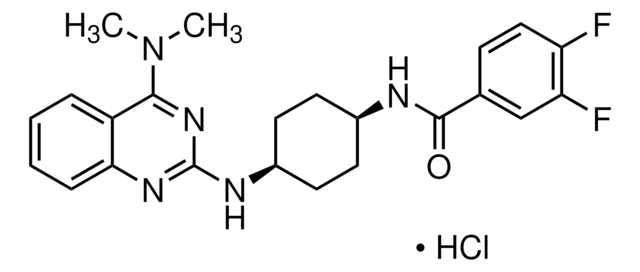A8054
D(−)-2-Amino-5-phosphonopentanoic acid
NMDA receptor antagonist
Sinónimos:
D(−)-AP-5, D(−)-APV, D-2-Amino-5-phosphonovaleric acid
About This Item
Productos recomendados
assay
≥98% (TLC)
form
powder
optical purity
optical purity: ≥90% (HPLC, Marfey′s reagent)
technique(s)
ligand binding assay: suitable
color
white
mp
245-246 °C
SMILES string
N[C@H](CCCP(O)(O)=O)C(O)=O
InChI
1S/C5H12NO5P/c6-4(5(7)8)2-1-3-12(9,10)11/h4H,1-3,6H2,(H,7,8)(H2,9,10,11)/t4-/m1/s1
InChI key
VOROEQBFPPIACJ-SCSAIBSYSA-N
Gene Information
mouse ... Grin2a(14811)
rat ... Grik1(29559) , Grin2a(24409) , Grin2b(24410) , Grin2c(24411) , Grin2d(24412)
¿Está buscando productos similares? Visita Guía de comparación de productos
Application
Biochem/physiol Actions
Storage Class
11 - Combustible Solids
wgk_germany
WGK 3
flash_point_f
Not applicable
flash_point_c
Not applicable
ppe
dust mask type N95 (US), Eyeshields, Gloves
Certificados de análisis (COA)
Busque Certificados de análisis (COA) introduciendo el número de lote del producto. Los números de lote se encuentran en la etiqueta del producto después de las palabras «Lot» o «Batch»
¿Ya tiene este producto?
Encuentre la documentación para los productos que ha comprado recientemente en la Biblioteca de documentos.
Los clientes también vieron
Rats and Blockade of Long-Term Potentiation in viva by the
IV-Methyl-D-Aspartate Receptor Antagonist AP5
Nuestro equipo de científicos tiene experiencia en todas las áreas de investigación: Ciencias de la vida, Ciencia de los materiales, Síntesis química, Cromatografía, Analítica y muchas otras.
Póngase en contacto con el Servicio técnico











